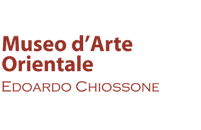In his will, drawn up in January 1898 three months before his death, Edoardo Chiossone left his entire collection to the Ligustica Academy of Fine Arts in Genoa (which he considered his "mother in art") leaving them the task of putting it on permanent public display. The collection arrived in Genoa in 1899, having travelled by sea and was contained in 96 large cases. Set up on the third floor of the Accademia, the Chiossone Museum was inaugurated in October 1905 on the occasion of the visit to Genoa of the King and Queen of Italy. In 1942 the Museum was closed and the collection removed from the danger of the bombings of the Second World War: they were transported to safety by Genoa’s city council which, by virtue of a testamentary clause, became the owner of the collection immediately after the end of the war.
The magnificent building that currently houses the Museum was specially designed, with structural and stylistic references to Japanese architecture, to house the Chiossone Collection, by the late architect Mario Labò. The exhibition layout was entrusted in 1967 to the engineer Luciano Grossi Bianchi, who designed and created it in collaboration with Giuliano Frabetti, Director of the Chiossone Museum from 1956 to 1990, and Caterina Marcenaro (Genoa, 1906-1976), Director of the Fine Arts of the Municipality of Genoa. The building was inaugurated on May 7, 1971 and has been open to the public since that date, the Museum maintained the same layout until February 1998.
The current permanent exhibition, presents some changes compared to the original by Grossi Bianchi, offers a sample of the collection, presented according to thematic and technical-artistic classification: large Buddhist sculpture, armour & weapons, applied arts (metalwork techniques, enamels, lacquers, ceramics and porcelain), theatrical masks, small bronzes and wooden sculpture.
The paintings, graphic works, paper materials and ancient books are excluded from the permanent exhibition for their specific conservation requirements and are only on display to the public during temporary exhibitions.




